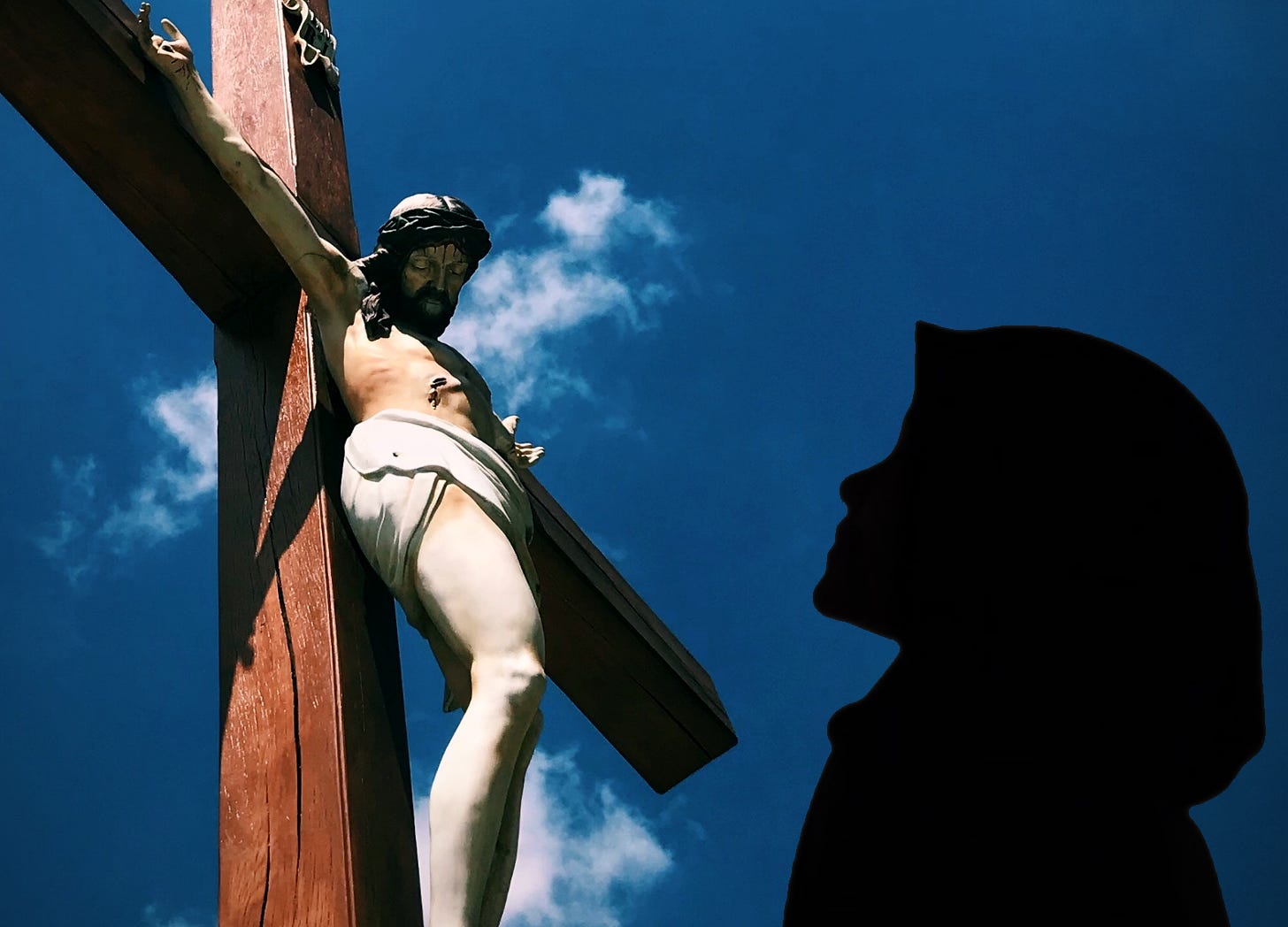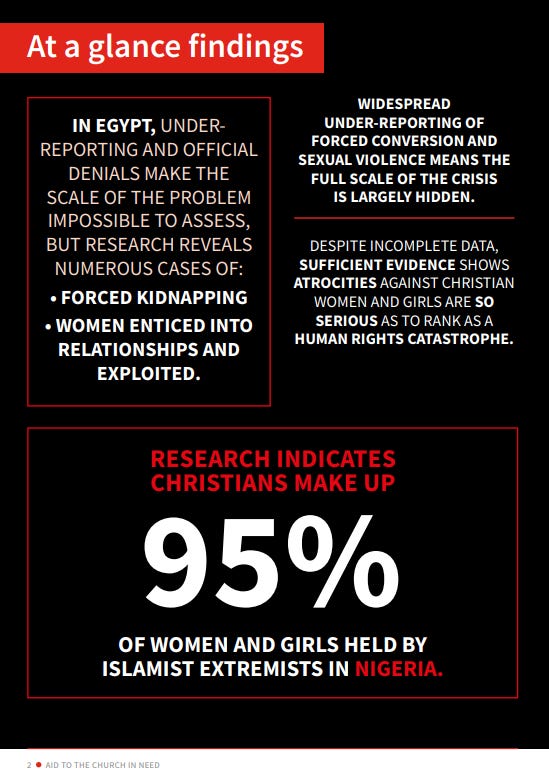Protecting The Girl Child Amidst the Media's Resounding Silence
Problems do not stop when the guns are silent. The impact of traumatic experiences extends over a much greater period.
The past week, the world was shocked by the violent crimes the Palestinian terrorist group Hamas committed against Israelis. What horrified people the most was probably the rape and abduction of Jewish women and children. I, too, watched the news, the videos, and the social media content in horror, but I was less surprised. Not even a month ago, Azerbaijani men were calling for the abduction of Armenian women and children, offering money to chop their limbs off. Stating they desired to let “hot” Armenian girls “taste Azeri DNA” and similar comments. This was the first post I saw firsthand, and it also referenced the Armenian Genocide of the twentieth century, where thousands and thousands of Armenian women and girls were abducted, raped, forcibly married, and converted to Islam. This instantly reminds young Armenian girls today of what their ancestors went through during the genocide, which some have described as a fate worse than dying and hence, an act of deliberate cruelty. These hateful social media posts of Armenians by Azerbaijanis have been well documented, for example, by Armenian Human Rights defender Arman Tatoyan. And yes, some of these social media posts need to be verified, and, of course, we must be careful with believing everything we see.
Threatening to harm and abducting children is unfortunately a widespread problem; only last week, on October 11th, the Human Rights Lawyers at ADF International published an article in which they stated that 100 million girls worldwide are at risk of being forced into child marriage over the next decade. Specifically, girls from religious minorities in Africa and parts of Asia are under threat of being abducted, forcibly married, and converted to Islam. ADF International shares the testimonies of some of these girls in their recently published mini-documentary “Stolen Lives: The plight of girls from minority religions facing forced marriages and conversions.” Friday, October 13th the United Nations General Assembly held a meeting covering this problem, and the European Union will also highlight this during a special meeting this coming November. However, the mainstream media are still very silent about this issue, except for some extreme examples, as we've seen happening in Israel lately.
Identification
The difference in the reporting between what happened in Israel and what previously happened in Artsakh was the fact that the latter hardly received any media coverage at all. Recently, I was asked to speak at the United Nations General Assembly on protecting girls from slavery, kidnapping, trafficking, forced marriage, and religious conversion. What I highlighted there was the problem with identification; to reach the headlines, and with that, draw attention to atrocities that are happening. The audience needs to identify with the victims of these crimes, and their stories need to resonate with that audience. Specifically, since a good part of news today is based upon human interest, this becomes more and more important. Take the example of the war between Hamas and Israel for example, people have been choosing sides with the group they identify the most with and were willing to go to the streets and march for one side or the other. This can be a good thing; it can engage the public in cases of human rights abuse or other ideological issues. There is, however, also a downside to it. The victims we hardly identify with, like the Armenians I’ve mentioned above, receive less media coverage, and therefore their suffering remains largely unknown.
Abduction, forced marriage, and religious conversion
For the past eight years, I have written mainly on the phenomenon of abduction, sex slavery, forced marriage, and forced conversion of women and girls from religious minority groups. This includes countries such as Pakistan, Nigeria, Egypt, Syria and Iraq. In Pakistan each year, an estimated number of 1,000 mainly Hindu and Christian minor girls are being abducted, forced to marry, and convert to Islam. Some say this number is even higher, but because religious minorities in Pakistan are discriminated against, cases are not always reported because local authorities refuse to help the parents of a missing girl. The United Nations, the United States Commission for International Religious Freedom, as well as the European Union, have all addressed this problem, but mainstream media hardly cover these stories, if at all.
According to the 2021 report “Hear Her Cries” by Aid to the Church in Need, research indicates that 95% of women who are held by Islamist extremists in Nigeria are Christians. Especially in the northern part of the country, where Islam is the dominant religion and there are twelve states where Sharia operates in the criminal as well as the religious domain.
Open Doors, however, writes that there is an increase in abductions in the southern part of the country too. One story that did make the headlines, is the abduction of Leah Sharibu by Boko Haram together with over a hundred of her schoolmates. Leah was fourteen when she was abducted in February 2018, now more than five years later, she remains in captivity because she refused to renounce her Christian faith.
The Coptic Christian minority of Egypt also suffers persecution in various ways; discrimination in the work market and the justice system, but also through the abduction, forced marriage, and religious conversions of Coptic girls and women. According to Coptic Solidarity International, many cases of abduction stay under the radar because authorities use the excuse that girls voluntarily marry and convert, even when this concerns minor girls. Authorities also do not always show themselves willing to listen to parents who want to report a missing child. This has led to many cases without official documentation, which has been a problem in gaining international attention from foreign governments, NGOs, and the media. Still, the Coptic advocacy estimates there have been "about 500 cases within the last decade, where elements of coercion were used that amount to trafficking."

Rape as a tool of genocide
The Islamic State of Syria and Iraq, ISIS, committed genocide of the Yazidi population in both countries. ISIS raped women and girls, some as young as nine years of age, sold them into sexual slavery to buyers on a slave market, or gave girls as a gift to other men. Yazidis have reportedly been sold to men from Kazakhstan, Saudi Arabia, Egypt, Iraq, Turkey, and Palestine. Women and girls were sometimes sold more than ten, even fifteen times, to different men. Many were forced to convert to Islam. As I mentioned during my speech at the United Nations General Assembly last week, often media portray sexual violence in conflict as a byproduct of war or armed conflict rather than a problem, or indeed a weapon, in its own right. Many scholars have already pointed this out, but it has hardly been picked up in the media, that rape can be used as a way of committing genocide. Only since the late twentieth-century rape has been recognized as a war crime in itself and genocidal rape means using rape as a tool to destroy a people.
When we look at the situation in Pakistan where Christian and Hindu minor girls are abducted and forced into marriage and religious conversion, this can easily be viewed as a form of genocide as well, even when it does not happen during an armed conflict or a war. The Christian community of Pakistan does not even comprise 2% of its entire population, but according to the report by Aid to the Church in Need, research suggests that 70% of these cases could be comprised of Christian girls who are forcibly converted and married. When girls in a fertile or birth-giving age are systematically abducted in such a large number, and given the fact that the children they bear will be Muslim once they have been converted, it is not rocket science to see how this small Christian population in Pakistan is slowly being diminished in a very gruesome way.
Role of the media
Social media platform Facebook, according to Aid to the Church in Need, censored the ads promoting their report “Hear Her Cries.” ACN recorded that their campaign had, due to the restrictions on Facebook, 90% fewer reach which resulted, they say, in the loss of approximately 7,000 signatures of support. When the mainstream media hardly write about these issues and reports by human rights advocates are being censored on their own platforms, one can imagine what this does to public awareness concerning this problem; it is almost non-existent.
Another issue is that because the media often take statements from authoritative regimes, who are given every opportunity to deny that there is such a thing as discrimination against religious minorities in their country, without any disclaimer, raising awareness becomes close to impossible. Media and policymakers each have their own role to play. By raising awareness in newspapers, on social media, or television, policymakers can be put under pressure to take action. When this does not happen, big issues like child trafficking continue to fly under the radar, which only enables traffickers, abductors, and buyers. For example, for many in the West, ISIS has been defeated and our attention has shifted to other problem areas in the world. As of today, there are still approximately 3,000 Yazidi women and girls missing, either still in the hands of ISIS, or other men. Since there is hardly any coverage of this, governments are not put to the test to actively help free these victims of genocidal rape and sex trafficking.
Media should not only be interested in sensational headlines, but they should also engage in extensive follow-up reporting regarding the aftermath of armed conflicts or wars in communities that have been impacted by violence or even genocidal campaigns. Problems do not stop when the guns are silent. The impact of traumatic experiences extends over a much greater period. If not handled properly, violence can easily erupt again, as we can see now happening in Syria and Iraq, where after the insurgency of ISIS, Turkey-backed militias committed grave human rights violations without hardly any coverage and no condemnation or consequences from the international community. For example, according to the European Union Agency for Asylum, in Syria, there have been reports of rape and abduction for the sole purpose of sexual violence. Also, in refugee camps, ISIS sympathizers have established a morality police who have installed a dress code, punishing all women they consider “infidels”. All of this must be made known to a broader public to help raise awareness and combat the trafficking of women and girls.










San Francisco is the home of the Church of Satan.
Satanism is a Jewish Cult . . . https://cwspangle.substack.com/p/satanism-is-a-jewish-cult
“So, remember, every picture tells a story, don't it…” ― Rod Stewart